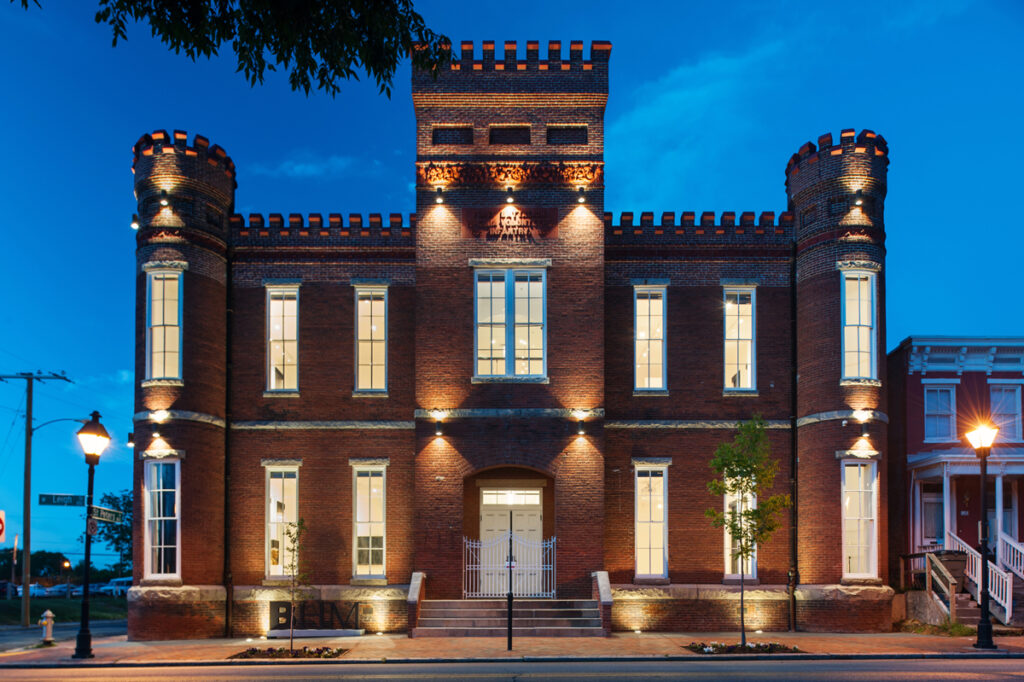The Black History Museum and Cultural Center of Virginia is officially open, and if you haven’t yet been to this historic site you’re in for a treat. Join us for the inside scoop and an exclusive sneak peek inside the work done to connect the Leigh Street Armory with the museum from a part of the team that made it all happen. Ever wonder what it’s like to capture a powerful, significant moment in time and permeate its impact and feeling through walls, carpet and exhibit design? All that, and a few fun facts about the site awaits you.
A look back
Feast your eyes on the original building, the First Battalion Virginia Volunteers Armory, more commonly known as Leigh Street Armory. It was built in 1895 and served as an armory for African-American militias until 1899 when the space lent itself as school for African-American children until 1895.
“The original building has gone through so many different transformations. It’s refreshing to finally be able to tell the story of the building through the architecture. It’s very rare that you get to combine old and new, and make it work so eloquently.” – Ben Winn, Project Designer

Walking in
Upon entering, visitors are greeted with floor to ceiling glass windows, contrasted with brick walls from the existing armory. Visitors can continue directly into the exhibit halls or break for refreshments at Woolworth’s Luncheonette, a small diner-style lobby built to replicate and commemorate the iconic sit-in that occurred at Woolworth’s lunch counter in Greensboro, North Carolina in 1960. Photos from the sit-in line the walls of the 1950’s-style diner, offering a powerful juxtaposition between visitors taking a seat in the present and those who sat to stand up for their rights in the past.
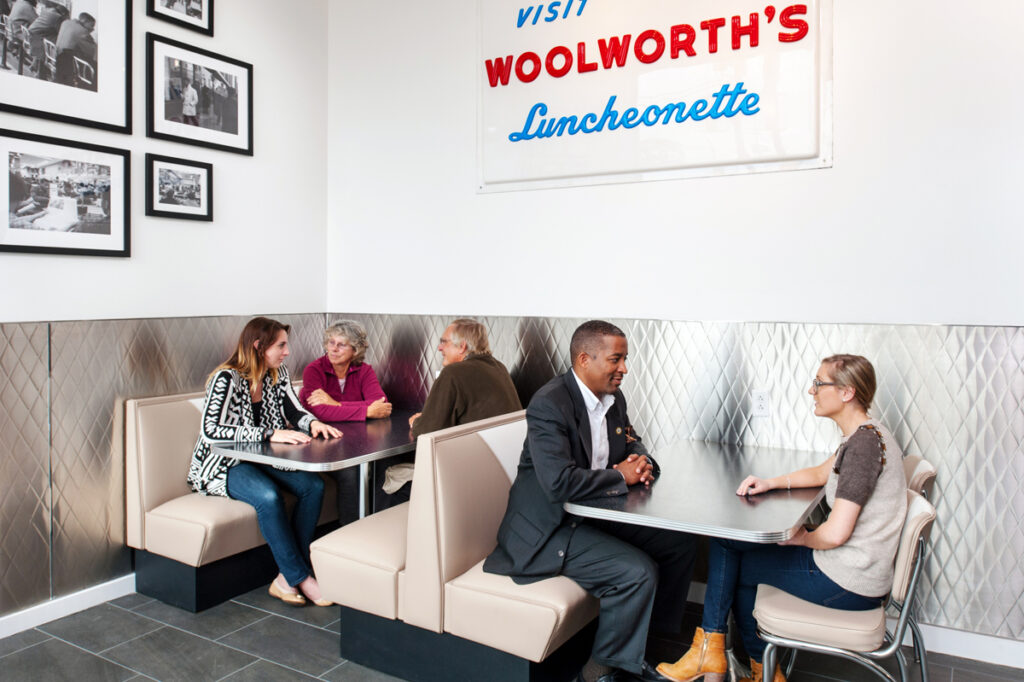
The first floor
While it was important to get the architecture right, another important component of the space is its use of interactive technology. Our designers were meticulous in how the different sections of the museum flow, naturally guiding visitors from one exhibit to another. From Woolworth’s, visitors easily spy an airy corridor. When venturing through this next area, pay close attention to a display of original artifacts salvaged from various archaeological sites around the country.
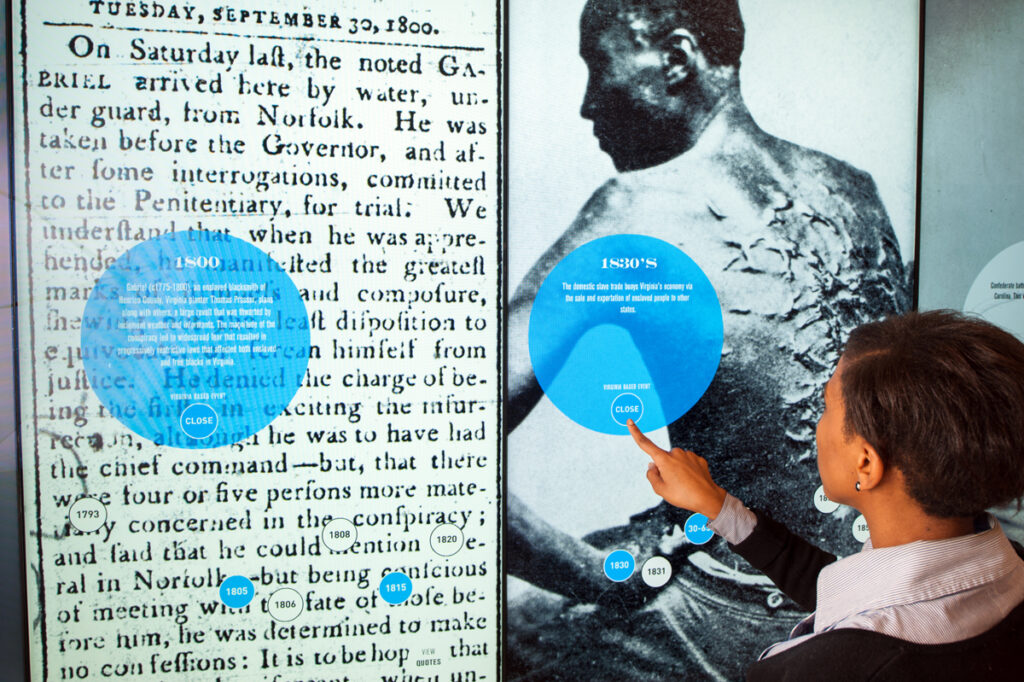
Before entering one of the two main floor exhibits, take an exploratory trip through time via a series of touchscreen displays. Through technology and art, visitors can learn about African-American history from its ancient origins, all the way to present-day America. The sizable corridor is fit for gathering and casually meandering to the next exhibit.
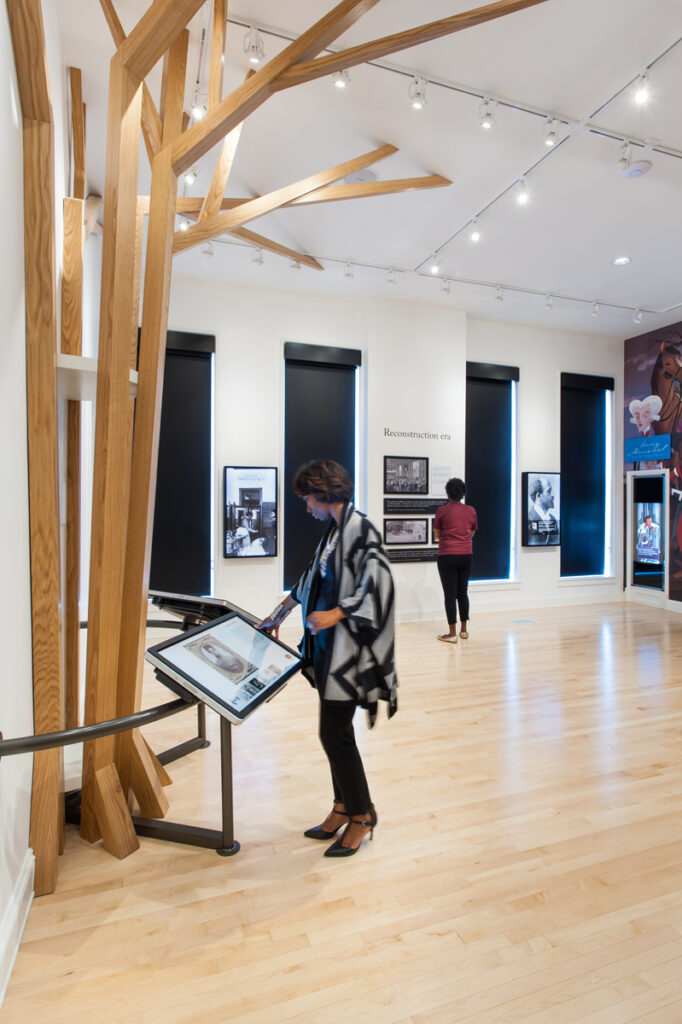
Continue on the main floor to see Arthur Ashe, Wendell Scott and other iconic African-American figureheads honored in one of the museum’s permanent exhibits. The stark white walls and natural light pouring through the original armory windows are a dynamic canvas for showcasing the art. The next room over houses an incredible architectural representation the famous Emancipation Tree.
During the Civil War, the peaceful shade of the tree served as the first classroom for newly-freed men and women who gathered under its branches, eager to be taught. The massive oak stands at the entrance of the Hampton University campus as a lasting symbol of the land’s rich heritage.
The tree’s angular design complements the room and interactive displays that branch out beneath it, beckoning visitors to approach the exhibit and learn more of its story.
“The representation that was created is –in my opinion– a perfect marriage of architecture, modern design, technology and history.” – Burt Pinnock, Principal
Second floor
The upstairs landing acts as a sort of palate cleanser between the two floors. Everything is deliberate, yet simple. The unique pattern of the carpet gives the appearance of waves. It is visually compelling without distracting from the purpose of the space.
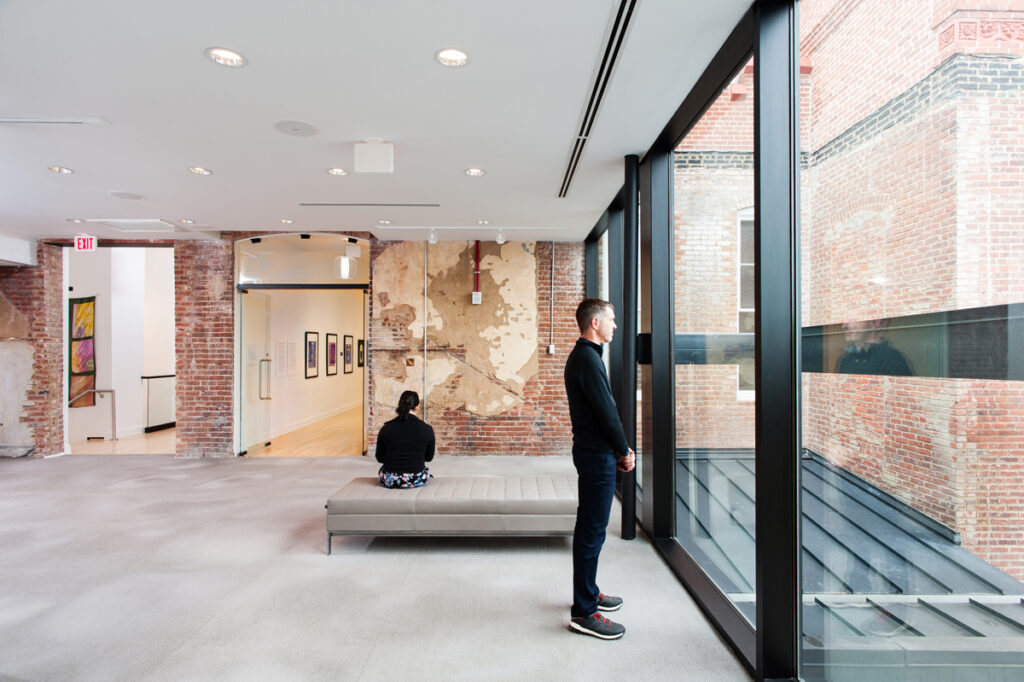
The open space of the landing is perfect for visitors to take a break between the upstairs sections of the museum. They can have a seat on a bench and enjoy the view of historic Jackson Ward while absorbing all of the natural light from the large, west-facing windows. Exposed brick from the building exterior gives a subtle hint of two worlds colliding: the landing, which is a new addition to the building, meeting the exhibit halls that are a part of the original structure or the armory.
The architecture of the hallway doesn’t take away from the art or vice versa, but the way the lights align with the arch of the doorway and the back corridor is visually stunning. The hallway is narrow but not too narrow. It’s a natural guide to the exhibit spaces but it stands on its own as constructed space.
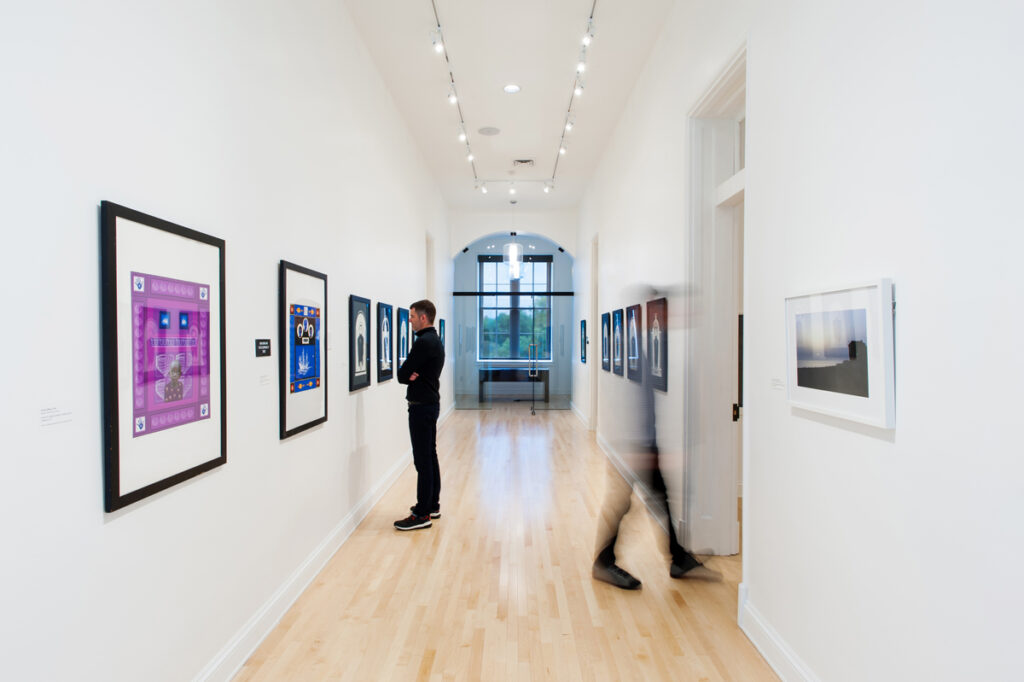
Photos depicting one man’s journey aboard a slave ship are neatly displayed along the second floor’s corridor, which connects to traveling exhibits. Don’t miss the permanent installation located beyond the glass doors at the end of the hallway; the interactive table allows visitors to dive deeper into the building’s story, its surrounding exhibits and a global perspective of African-American heritage.
After lots of planning, designing, construction and peppering in those last sparkling touches, the historic significance of this space shines. We hope you’ll join others in visiting this local gem that will no doubt have an impact on our community and beyond. For more information about admissions and current exhibitions, visit the museum’s website at www.blackhistorymuseum.org.
That completes our tour; now it’s time to go see the real thing!
